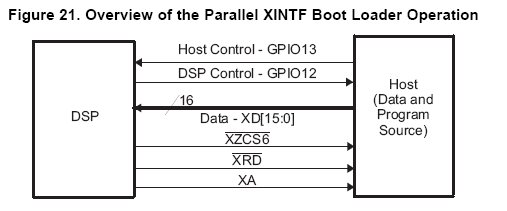Hi engineers
How is the connections for boot mode 5 : "Parallel XINTF boot "?
I read sprufn5b(boot rom reference guide). but I wonder why in page 39 no address line is used?:
can i use this boot mode with an external parallel flash like AT49BV802D?
i don't want to use boot mode 9(jump to xintf) because it executes code line by line from xintf so is low speed.
i want to copy the code from external flash memory to internal ram and execute from ram.
thanks alot


